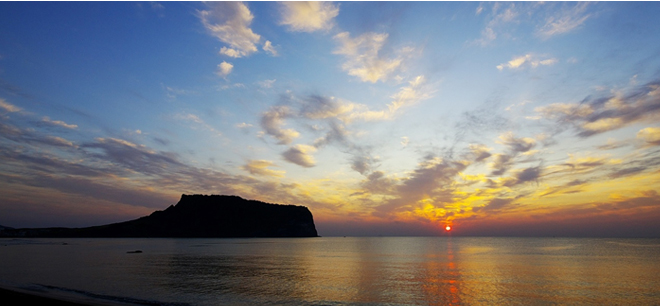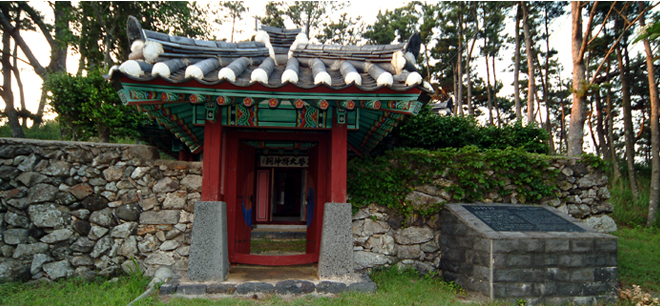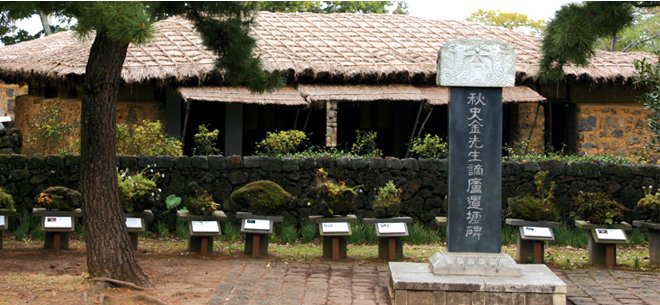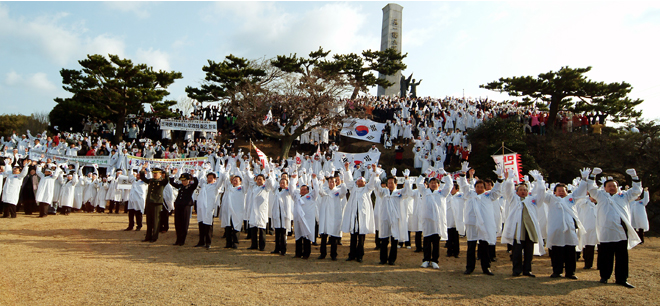Public enterprise working for the happiness of all through tourism, JTO
Jeju
HOME > Jeju > History of Jeju
History of Jeju
-

-
Every Korean student learns about the history of Jeju during their time at school because Jeju Island is a place where history is still alive. Let’s take a look at Jeju’s history from the Three Kingdom Period through the Goryeo and Choseon Dynasties and Japanese colonial period, and up to the tumultuous years of modern history.
-
The thousand year history of Tamna
-

- Tamna is Jeju’s old name, meaning “island country.” The process of settlement of Tamna on Jeju Island is illustrated by Tamna’s settlement myth, which is known as Samseong shinhwa. To see archaeological evidence of the early settlement of Jeju, visit Samyang-dong Prehistoric Site, which has been designated Historic Site No.416. The site contains the earliest known and largest residential remains in Jeju, dating back to the third century B.C. during the proto-Three Kingdoms Period. This site shows society during the period of Tamna formation (200 B.C. ~ 200 A.D.) Tamna is known to have been an active trading partner with Baekje, Goguryeo and Silla during the Three Kingdoms Period. Tamna also had diplomatic relations with the Dang Dynasty in China and Japan after Baekje was destroyed by an allied force of Silla and Dang. Tamna was historically known as the independent Kingdom of the Sea. It became subjected to the Goryeo Dynasty, and its name was changed to Jeju. meaning “a big province across the sea.”
-
-
The final battle site of anti-Mongolian resistance, Hangpaduri
-

- After being continuously defeated by the allied forces in Ganghwado and Jindo, Sambyeolcho came to Jeju, which was his last battlefield, and built a double-walled fortress inside an oreum. The site, which is the present Hangpaduri, spread across 6 kilometers with a height of 5 m and width of 3.4 km, and an inner stone-castle with a courtyard, government offices and various defense facilities. However, Hangpaduri fortress fell on April 4, 1273, after Sambyeolcho finally died, having fought till his final breath and last soldier. The blood of Sambyeolcho dyed the soil of the oreum red and since then it has been called Bulgeun (Red) Oreum. Traces of this fortress can still be found, as can relics including stone hinges and tiles that are displayed in the Hangpaduri Museum and serve as important materials for historical studies. An Anti-Mongolian Monument at the museum entrance extols the nationalistic spirit of Sambyeolcho.
-
-
History of Exile, Chusa Exile Site
-

- Jeju Island is where approximately 200 people were sent into exile throughout the 500 years of the Choseon Dynasty. The island was suitable to isolate criminals because it was cut off from the mainland and it was difficult to travel there at that time. This site is where Chusa Kim Jeong-Hee completed “Sehando” while in exile. The Chusa Exile Site has remained a part of Jeju Island where we can remember the artist’s life in exile.
-
-
The outbreak of the Independence,or Jeju Hangil (Anti-Japanese), Movement
-

- The representative independence movements in Jeju were the Jocheon Independence Movement, the Beopjeongsa Movement and the Women Divers Anti-Japanese Movement. Jeju was only a small island, but it took part strongly in the various Anti-Japanese Movements. Among them, the Women Divers Anti-Japanese Movement of 1930, which involved more than 10,000 women divers, was the largest ever national movement by women.
-
-
Learn about tragedy before you experience peace April 3rd Peace Park
- In 1948, Jeju suffered through the April 3rd Incident, which is regarded as one of the worst tragedies in modern Korean history. Tens of thousands of lives were sacrificed and about 130 villages were destroyed. The April 3rd Incident was like a gale that swept across Jeju over a period of about seven years. Because of this, it is not unusual to find historical sites related to the April 3rd Incident everywhere on the island. Jeju has since become an island of tourism and world peace, but if you want to experience true peace, you should first know about the tragic time that Jeju endured. If you pass by without understanding that history, your tour will only be half complete. Jeju’s April 3rd Peace Park was established to look back on the April 3rd Incident and is utilized as an educational place for peace and human rights. The main facilities include sites at which to remember the victims, such as Memorial Tower, Memorial Altar, Memorial Plaza, April 3rd Historical Center, April 3rd Cultural Center and Sculptures of Symbols.




